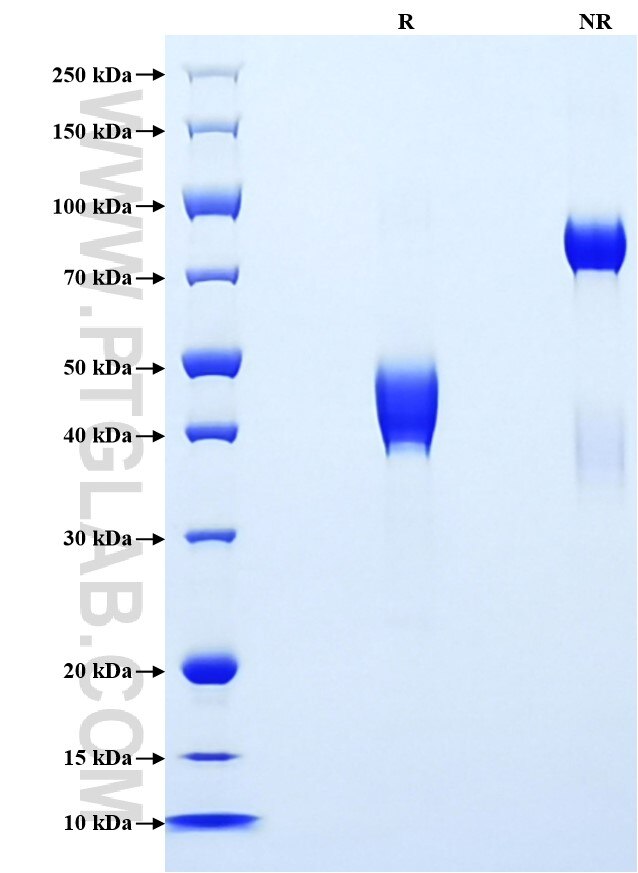Recombinant Human CCL7/MCP-3 protein (rFc Tag)
Species
Human
Purity
>90 %, SDS-PAGE
Tag
rFc Tag
Activity
not tested
Cat no : Eg3337
Validation Data Gallery
Product Information
| Purity | >90 %, SDS-PAGE |
| Endotoxin | <0.1 EU/μg protein, LAL method |
| Activity |
Not tested |
| Expression | HEK293-derived Human CCL7 protein Gln24-Leu99 (Accession# P80098) with a rabbit IgG Fc tag at the C-terminus. |
| GeneID | 6354 |
| Accession | P80098 |
| PredictedSize | 35.2 kDa |
| SDS-PAGE | 38-50 kDa, reducing (R) conditions |
| Formulation | Lyophilized from 0.22 μm filtered solution in PBS, pH 7.4. Normally 5% trehalose and 5% mannitol are added as protectants before lyophilization. |
| Reconstitution | Briefly centrifuge the tube before opening. Reconstitute at 0.1-0.5 mg/mL in sterile water. |
| Storage Conditions |
It is recommended that the protein be aliquoted for optimal storage. Avoid repeated freeze-thaw cycles.
|
| Shipping | The product is shipped at ambient temperature. Upon receipt, store it immediately at the recommended temperature. |
Background
The chemokine CCL7 (MCP3) is a chemotactic factor and potent attractant of monocytes firstly characterized from the culture supernatants of MG-63 osteosarcoma cells. CCL7 is known to promote the recruitment of many innate immune cell types including monocytes and neutrophils to sites of bacterial and viral infection and eosinophils and basophils to sites of allergic inflammation. CCL7 is expressed at low levels in endothelial cells, fibroblasts and mononuclear cells and upregulated by various stimuli including viruses, type I or type II interferons (IFNs). CCL7 (MCP-3) mediates effects on a host of innate and adaptive immune cell types through binding to numerous receptors including CCR1, CCR2, CCR3, CCR5, and CCR10. Various studies have shown that tumor cells and stromal cells also produce high levels of CCL7, while the specific response element and signaling pathways involved are not entirely clear.
References:
1. JVanDamme.etal.(1992) JExpMed.176(1):59-65. 2. P Menten.etal. (1999) Eur JImmunol.29(2):678-85. 3. JasonWGriffith. et al. (2014) Annu Rev Immunol. 32:659-702. 4. ABen-Baruch. etal. (1995). JBiol Chem. 270(38):22123-8. 5. Pui YLee. etal. (2009) Am JPathol.175(5):2023-33.

